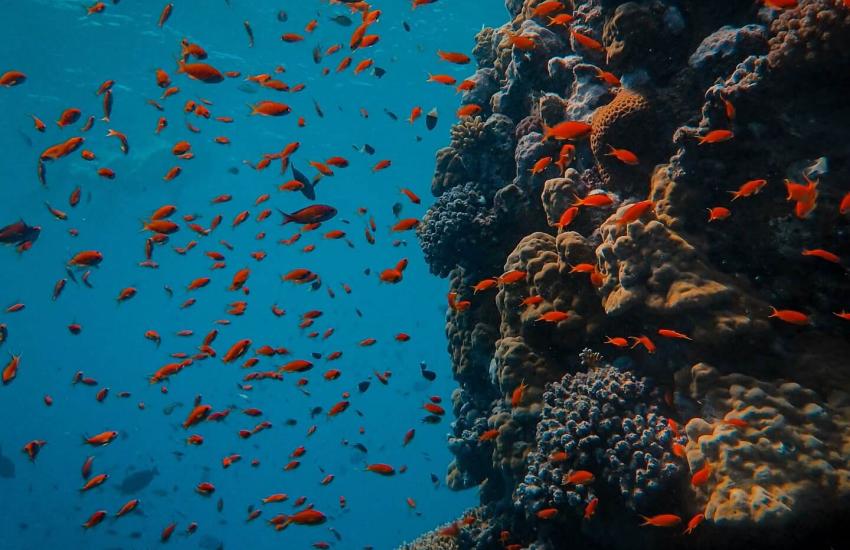Breadcrumb
-
Guidebook
-
Marine Conservation
-
What are the types of marine life?
What are the types of marine life?
Read about the various categories of marine life forms including reptiles, mammals, mollusks, fish, crustaceans, etc.

Marine life includes a diverse range of species that have evolved to live in marine conditions. These classifications give a broad overview, however, there are innumerable species within each category due to the enormous diversity of marine life. Each organism contributes to the balance and functionality of the marine ecosystem differently.
- Fish: The marine realm boasts an astonishing array of fish, making them the most diverse vertebrate group in these waters. From the tiniest reef-dwellers to the majestic pelagic giants like sharks and tuna, fish exhibit a wide range of sizes, shapes, and colors, all equipped with streamlined bodies and gills to thrive underwater.
- Mammals: Marine mammals have evolved specialized features for aquatic life. This group includes cetaceans like whales, dolphins, and porpoises, pinnipeds such as seals and sea lions, and sirenians represented by manatees and dugongs. They've developed adaptations like blubber for insulation, flippers for swimming, and blowholes for efficient breathing.
- Reptiles: Embark on a unique volunteering journey focused on marine reptiles, with sea turtles taking center stage as the most renowned inhabitants. With specialized flippers for swimming, these reptiles contribute to the intricate balance of marine ecosystems by laying their eggs on beaches. Dive deeper into marine conservation by also exploring lesser-known reptiles like marine iguanas and saltwater crocodiles, found in coastal and marine habitats. Join our volunteer programs to actively contribute to marine reptile conservation and ensure the well-being of these fascinating creatures. Make a positive impact – volunteer today.
- Invertebrates: Explore the captivating world of invertebrates – a diverse group including corals, jellyfish, sponges, sea stars, sea urchins, octopuses, squids, and more. These fascinating marine animals lack a backbone, showcasing a myriad of body forms and modifications. Join our volunteer initiatives to contribute to invertebrate conservation efforts, protecting the rich biodiversity of marine ecosystems. Make a meaningful impact by volunteering and ensuring the well-being of these unique and essential marine species.
- Mollusks: Mollusks, a substantial invertebrate phylum, thrive in marine habitats. Clams, mussels, oysters, snails, and squids are included in this diverse category. Mollusks often have a soft body that is frequently covered by a hard shell.
- Crustaceans: Explore the fascinating world of crustaceans – a diverse arthropod group flourishing in marine ecosystems. From krill and barnacles to prawns, crabs, and lobsters, these organisms boast segmented bodies encased in exoskeletons with jointed appendages. Join our volunteer initiatives to contribute to crustacean conservation efforts and help protect the intricate biodiversity of marine ecosystems. Make a meaningful impact by volunteering and ensuring the well-being of these essential marine species.
- Microorganisms: Delve into the hidden world of microorganisms, essential components intricately woven into marine ecosystems and the food chain. From phytoplankton, resembling microscopic plants, to zooplankton, encompassing small animals and larvae, these humble organisms form the cornerstone of the marine food web. Join our volunteer programs to contribute to the conservation of marine microorganisms, ensuring the vitality of the intricate marine ecosystem. Make a difference by volunteering and supporting these fundamental organisms that supply vital energy and nourishment for the larger inhabitants of the sea.

